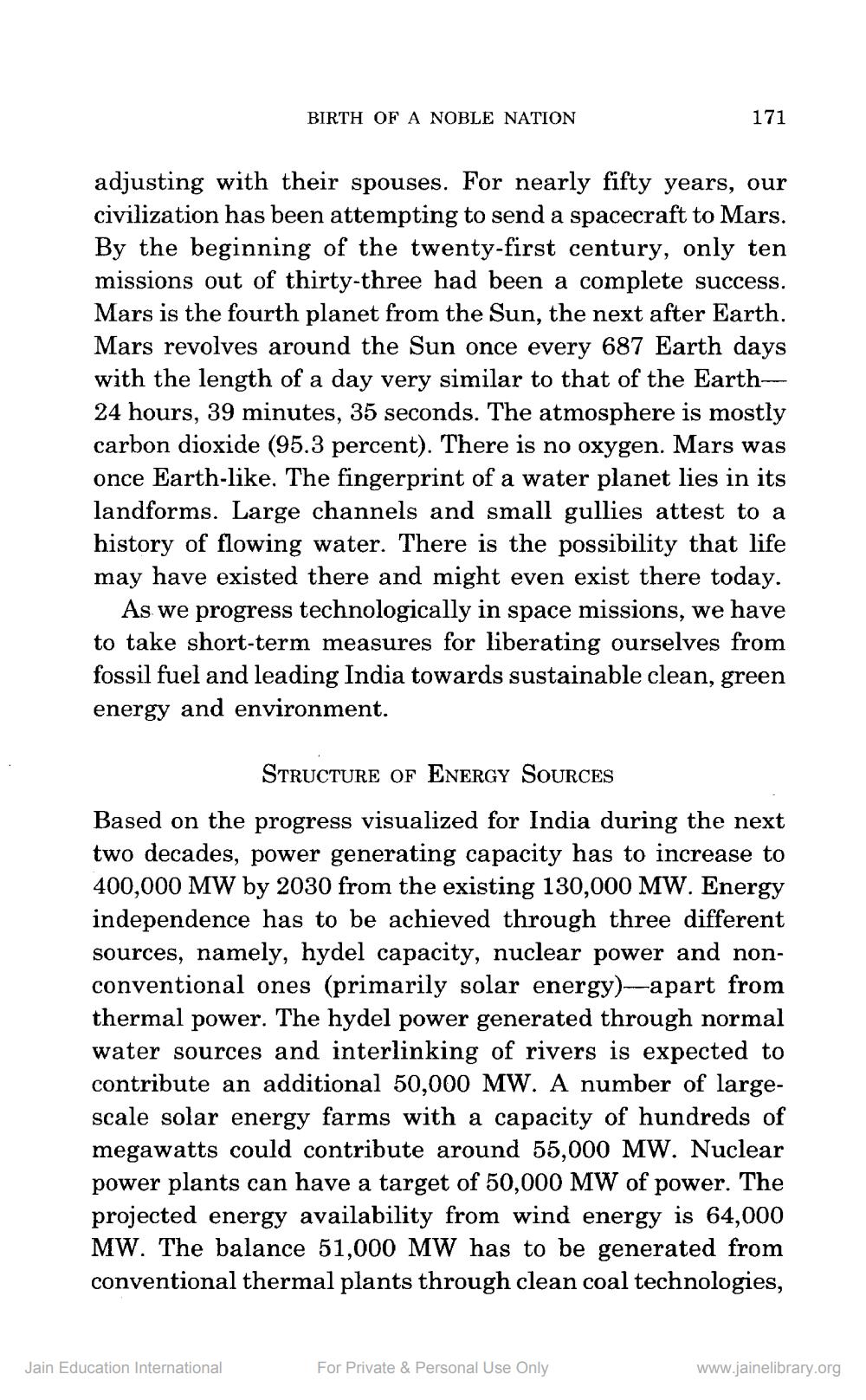________________
BIRTH OF A NOBLE NATION
171
adjusting with their spouses. For nearly fifty years, our civilization has been attempting to send a spacecraft to Mars. By the beginning of the twenty-first century, only ten missions out of thirty-three had been a complete success. Mars is the fourth planet from the Sun, the next after Earth. Mars revolves around the Sun once every 687 Earth days with the length of a day very similar to that of the Earth24 hours, 39 minutes, 35 seconds. The atmosphere is mostly carbon dioxide (95.3 percent). There is no oxygen. Mars was once Earth-like. The fingerprint of a water planet lies in its landforms. Large channels and small gullies attest to a history of flowing water. There is the possibility that life may have existed there and might even exist there today.
As we progress technologically in space missions, we have to take short-term measures for liberating ourselves from fossil fuel and leading India towards sustainable clean, green energy and environment.
STRUCTURE OF ENERGY SOURCES Based on the progress visualized for India during the next two decades, power generating capacity has to increase to 400,000 MW by 2030 from the existing 130,000 MW. Energy independence has to be achieved through three different sources, namely, hydel capacity, nuclear power and nonconventional ones (primarily solar energy)-apart from thermal power. The hydel power generated through normal water sources and interlinking of rivers is expected to contribute an additional 50,000 MW. A number of largescale solar energy farms with a capacity of hundreds of megawatts could contribute around 55,000 MW. Nuclear power plants can have a target of 50,000 MW of power. The projected energy availability from wind energy is 64,000 MW. The balance 51,000 MW has to be generated from conventional thermal plants through clean coal technologies,
Jain Education International
For Private & Personal Use Only
www.jainelibrary.org




